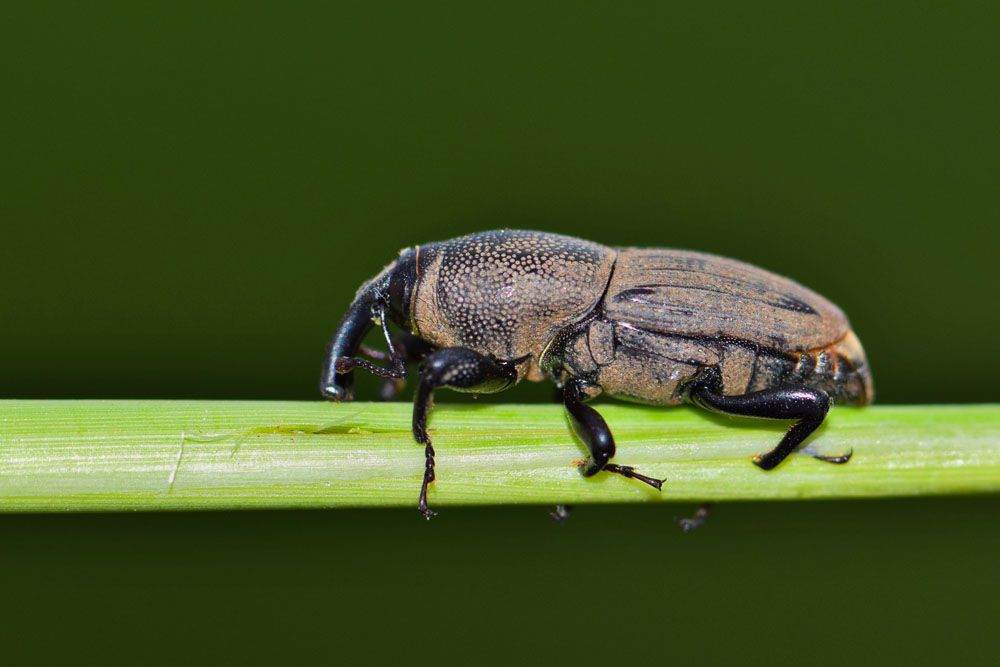
Hunting Billbug – Sphenophorus venatus vestitus
Hunting Billbug (Sphenophorus venatus vestitus)
Common Name: Hunting Billbug
Latin Name: Sphenophorus venatus vestitus
Appearance:
- The adult is 6 to 11 mm long with a short, wide, recurved snout. The weevil’s body surface is frequently covered with soil and a naturally pruinose, clayey covering, giving it a nasty look. The hue ranges from gray to black, with reddish or brown spots occasionally appearing.
- The larva is thickest in the center, characteristic of most weevil larvae. The body is white to yellowish, with a tan to brown head and predominantly black mandibles.
